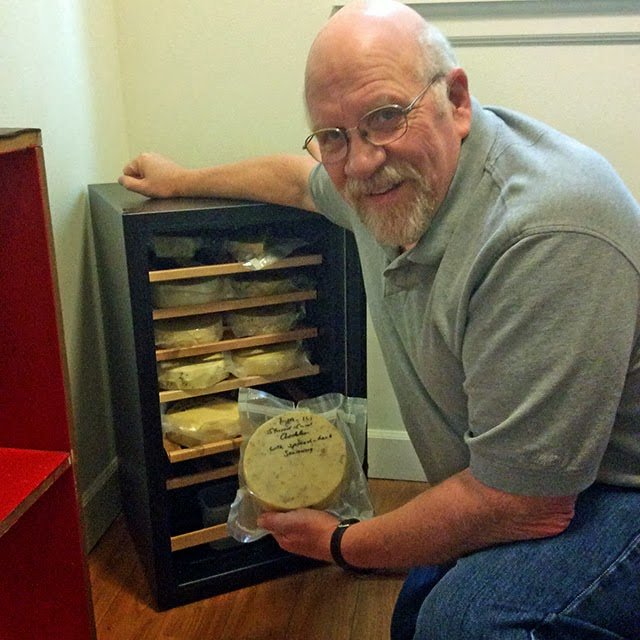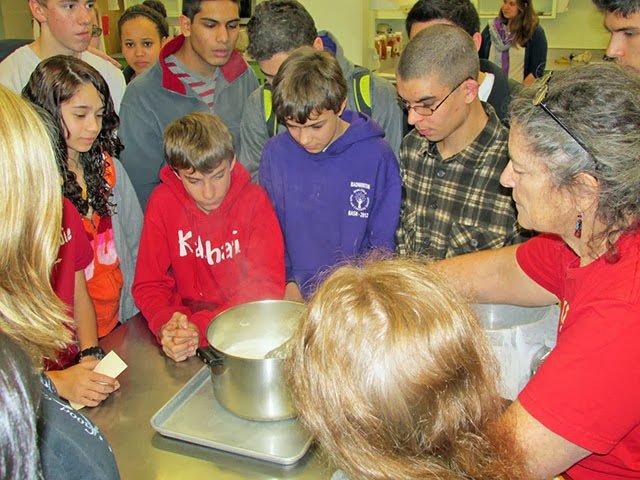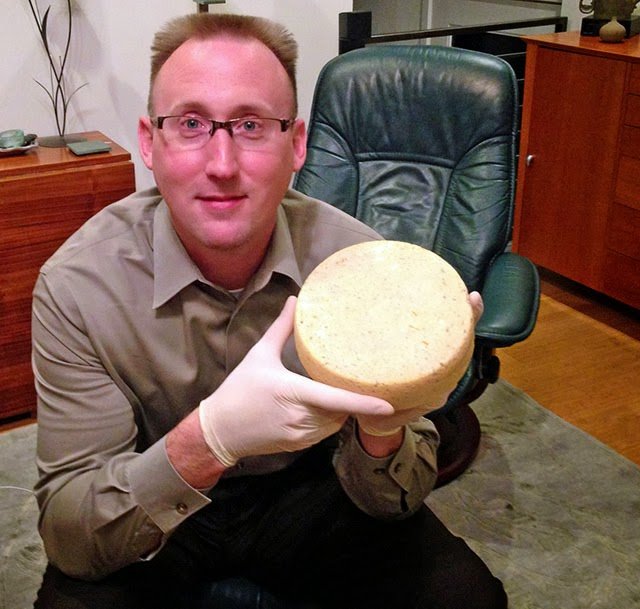
Jim Price with his wine cooler “cave.”
I first met Jim via e-mail when he entered our 35th Anniversary Essay Contest last fall. I read his story (below) and I wanted to learn more about him and his fascinating life.
When I asked him about doing this post, he said it would be nice to be on the other end of an interview because he spent most of his working years as a journalist, including five years as the editor of the Fort Devens Dispatch, back in the 70s, when it was still an Army post.
Altogether, he spent almost 11 years in the Army, stationed at Ft. Devens in Massachusetts, Germany, Greece and training in California and Virginia. After leaving the Army, he worked for various newspapers, and eventually owned his own weekly.
Jim and his wife, Patty, live in southern Washington, just north of Portland, Oregon. Jim is now “retired” but he works half time as the director of the Columbia Gorge Interpretive Center in Stevenson, WA. (See www.columbiagorge.org)
It is a state-of-the-art, 23,000-square-foot museum in the heart of the Columbia River National Scenic Area.

Saddle and Patty
He has a wide variety of hobbies, including baking, hunting wild mushrooms, and fishing. He and his wife also are volunteer puppy raisers for Guide Dogs for the Blind. They have these special dogs from 8 weeks old to 16 months, teaching them basic commands and socializing them. They are currently raising their 5th puppy, Saddle. (Jim said he has had to pick more than one dog hair from one of his cheeses!)
Three years ago, Jim started making cheese and he has become a master at it. (I haven’t tasted his cheeses but his family and friends love them, so I think it’s safe to assume they’re yummy!)
Jim’s Essay

Holding his first chanterelle mushroom-infused cheddar over a couple gallons of the mushrooms he gathered at the Gifford Pinchot National Forest, just a few miles from his house
So how has cheese-making changed my life? Well, I’m a bit fatter, does that count? Oh, and my friends think I’m even odder than they already thought. I think.
And speaking of thinking, it does that. Makes you think. Not hard, necessarily, but in a good way. It’s more like a science project than cooking something.
After I retired a few years back, someone gave my wife a magazine. She was interested in an article on beekeeping. Why, I don’t know since we aren’t farmers and our garden consist of two tomato plants and a potted zucchini.
Anyway, she left it on the little table in the john and an article on sourdough bread caught my eye. It was a long article and my butt went to sleep but I stuck with it.
Within weeks I had made by own starter (I called him Bob) and was turning out all kinds of breads and even sourdough pancakes. The best thing about baking bread is the instant gratification. I could start right after breakfast and within a few hours be slopping butter onto a steaming slice of pure carbs. Did I mention my large butt? Well, I’ve got a belly to match.
Twenty pounds later I knew I needed a different hobby. My oldest son is a classically-trained French chef. We were discussing recipes one day when the idea of home-made cheese popped up. I forced a speedy end to our phone conversation and ran to my computer, which is like six feet from my recliner. Google anything about making cheese at home and you can’t avoid the New England Cheese Supply Company and Ricki the Cheese Queen. I knew I had found my spiritual guide and my next passion.
Things got off to a good start. I like to tinker and came up with a very functional homemade press that I’m still using some three years later. And my first “farm-house” cheeses were surprisingly good.
Within a few months, however, things began to unravel. My wax job apparently had pinholes and some ugly molds showed up. (Now I’m strictly a vacuum-packed guy.) On another two-pound wheel everything looked perfect. So much so, I gave it to my youngest son, since he so liked my previous cheeses. He saved it for his birthday party, where it was sliced on a platter with crackers.
Later he told me the first inclination something was wrong was the sour look on a friend’s face and watching him secretly spit the cheese bite into a convenient plastic beer cup. Something had gone terribly wrong and the entire cheese tasted like bad bread mold.
Thankfully, I got better. And my cheeses are actually pretty good. I give a lot away so I’m sure I have more friends than before I started making cheese, and my new Saturday tradition is the perfect combination of watching college football and creating the next great cheese. This week I get to taste my first chanterelle-mushroom-infused-stirred-curd cheddar. Go Ducks!
Interview

Jim with his smoker
What kinds of cheese are you making?
Right now, I am primarily making stirred-curd cheddar, but I am having fun flavoring it with various
herbs and spices.
It’s all made with 2 gallons of raw milk and Ricki’s recipe for stirred-curd cheddar (in Home Cheese Making). The spices are added the same time as the salt. If the spices are salty (Old Bay, for example) I will cut back or eliminate the salt.
Some of my cheeses are:
- Pesto (1 tablespoon dried basil & 1 tablespoon minced garlic)
- Old Bay (which is a salty spice from New England (2 tablespoons)
- Mexican (2 tablespoons of taco seasoning)
- No-Salt Herb Blend I buy at Costco (2 tablespoons)
- Shallots & Chives (1 tablespoon of each)
The Pesto is probably the most popular, although my wife says the best cheese I make is the stirred-curd with nothing added and aged for at least four months.
I’ve done Gouda, Swiss, cream cheese, butter, farmhouse cheddar, traditional cheddar, Monterey Jack and fromage blanc. For me, cheese making is strictly a hobby.
I usually make one cheese a weekend. I bought a wine cooler and with a large bowl of water in the bottom for humidity, it makes a good cheese cave. After reading your newsletter a few months ago I made a cold-smoker and am having fun figuring out just the right system for smoking cheese. (My first one was way too strong.)

Diagram by Judit Repas in Felsozsolca, Hungary
You made a cold smoker?
Yes, you guys ran a story in the Moosletter by a woman who had made one and if I remember right, there was a diagram that she sent in (at left). Years ago (like 30) I was into smoking various meats and I read about making a cold smoker for certain kinds of fish that would also work for cheese. So that was way in the back of my brain, also.
All I did was build a wooden box with a rack inside and a door that slides up and down. The box sits atop a 2X4 stand so it is above the smoker (about 6 feet tall) and then I connected aluminum dryer vent ducting (about 8 feet long) to my Big Chief Smoker. The dryer vent is very thin-walled so it allows the heat to escape but the smoke gets to the box. Works great. I checked with a thermometer and the inside of the box is exactly the same temperature as the outside air.

Bundles of cream cheese on his draining “contraption”
What is your draining system?
That contraption is nothing more than a wooden frame built to fit my sink that I can hang bundles of curds from for draining. It just sits there, held in place by gravity. Two horizontal legs go to two different window sills, and the vertical leg sits in the sink.

The mold is sitting on a flat-bottomed strainer.
Your press looks interesting.
It’s a stainless pot with a strainer in it. The mold fits on the strainer and the turnbuckles attach to the large red follower. Multiple times I have checked the pressure with a fish scale so I know about how tight to make it for 10, 20, 30 pounds, etc. Works great, cleans up easily, and it cost very little.

Any advice for other cheese makers?
Like just about everything else in life, it’s all about the journey. Relax, slow down, learn the process and most importantly, enjoy the doing of it.
One little thing that your readers might enjoy: A few months back my wife bought a package of new sponges from QVC. They are called Scrub Daddy, and they are really great for cheese makers. Bakers, too. I have always used the green and yellow sponges with the scrubbers on the back. The problem is, when you are cleaning up curds (or dough) the pores load up and are hard to clean. The pores on a Scrub Daddy are much larger and the pieces just flow on through. Very easy to rinse out. Anyway, they really work well for me and they are available lots of places and online.
What are your goals?
Eventually, I would love to get into some of the more
complicated cheeses, but for now I guess my goal is to just keep getting better and refining my techniques. One of the best things about cheese making is it can be as simple or as complex as you want to make it. For example, the few times I tried I had really bad luck waxing, but I noticed in a photo in your newsletter that this lady was using a vacuum-pack system, which I already owned. So that’s what I use now, but I need to try waxing again and see if I can perfect it. So overall, my biggest goal is to learn more but continue having fun making cheese.














































































































































